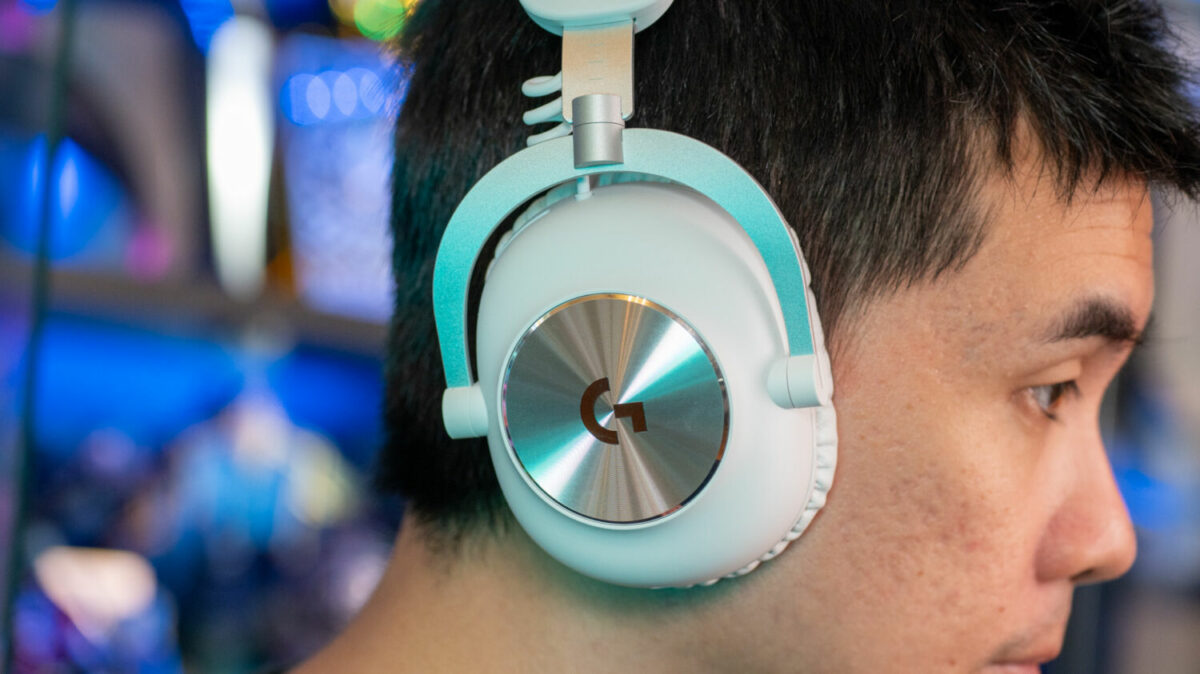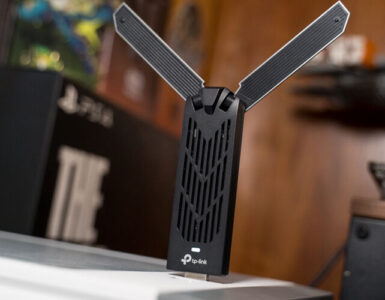When the first Logitech G PRO X Lightspeed was released in 2020, it was a great boon for the headset category for Logitech. Free of wires meant that gamers had more room to maneuver while still keeping up with all the action on screen without missing an audio cue.
Fast forward to 2023 and the latest iteration of Logitech’s flagship gaming headset has arrived in the form of the Logitech G PRO X 2 Lightspeed but in that time, the audio and gaming world has changed yet again. here’s now an added challenge of competition as in the last three years, a wide range of headsets have gone onto the market, each touting great sound and excellent mic quality.

At S$389, this gaming headset is also pricier than most other gaming audio peripherals, but Logitech has not skimped on features and built in any way. In comparison to the previous model, which has been a mainstay for the past three years of use, Logitech’s new offering sports minor tweaks to the original design. The headphone hinges, most prominently, now allow each ear cup to be independently rotated, enabling better adjustment to the contours of your head.
The hinges now allow for independent rotation of each ear cup, enabling better adjustment to the contours of your head. The soft leatherette is comfortable enough to have both headset and eyewear on at the same time without any noticeable heat build-up around the ears. Putting it through the test with an eight-hour Diablo IV grind yielded long-lasting comfort enabling us to go the distance.
It’s not something audio headset makers focus on but in the world of gaming where players go at it for hours on end, flexibility and comfort are a must.
Outside of physical attributes, the key change the Logitech G PRO X 2 Lightspeed has seen would be the inclusion of a new graphene driver, and we’ll elaborate on it more later on.

if you’re looking for a device that can be used for both work and play, the Logitech G PRO X 2 Lightspeed still looks bulky for smaller head sizes. While it does omit all the fancy RGB lights seen in other gaming headsets, it might not be as socially acceptable in a professional setting.
Based on price alone, it might be a tricky sell, especially if the current performance is marginally stronger than the previous model. Both headphones still sound good but it makes the price bump harder to justify overall.

On the left side are where the headset controls reside, including a power slider with a discreet LED indicator that communicates the pairing status. There are also buttons for muting the microphone and toggling its functionality, with the port located below a dedicated USB-charging port. The Bluetooth pairing button facilitates easy device connection, but the volume wheel – resembling the scroll wheel on a computer mouse – could do with a ratchet for finer volume control.

More notably, the headphone hinges now allow for independent rotation of each ear cup, enabling better adjustment to the contours of your head. The soft leatherette is comfortable enough to have both headset and eyewear on at the same time without any noticeable heat build-up around the ears. Putting it through the test with an eight-hour Diablo IV grind yielded long-lasting comfort enabling us to go the distance.
The Logitech G Pro X 2 Lightspeed introduces significant changes in terms of connectivity. In contrast to the original version, which only supported Lightspeed connectivity, the new model offers three options for pairing with your preferred devices. You can now connect via the Lightspeed dongle, Bluetooth 5.3, or the 3.5mm wired jack.
Lightspeed tech has been branded on all of Logitech’s Pro gaming hardware and touts the fastest response time in audio latency in this case in a wireless product via a dedicated 2.4GHz USB dongle. The new headset has a range of 30 meters whereas the previous iteration saw a range limit of 15 meters, but we doubt anyone would be gaming too far away from their devices.

The most prominent change, however, is the addition of 50mm graphene drivers. Graphene as a material comprises layers of carbon arranged in a lattice-like structure and stacked together to form structures that possess exceptional rigidity and strength while remaining lightweight. The use case of graphene in the realm of sound is touted to convert 99 percent of electrical energy into sound whereas the average headphone is only able to convert 10 percent to sound as the rest is lost as heat.
In the real world, no major audio difference between the previous Logitech G PRO X and this latest iteration was noted. Sure, both headphones already sound good as a baseline, but it was a little disappointing that the introduction of graphene didn’t make a world of a difference as touted by its theoretical description.

Still, the headphones proved to be reliable and good companions for our journey across Sanctuary in Diablo IV. The game audio and sound effects came across as clear and crisp, displaying great efficiency in picking out the sounds of the Fallen Shaman as it attempted to resurrect their brethren. This made it easy to quickly take note of its actions and dispatch key enemies before being overwhelmed by even more hostile hordes.
When it came to Doom Eternal, the sound remained excellent as expected. The inclusion of DTS Headphone:X 2.0 virtual surround sound further enhanced the soundscape, so it felt particularly satisfying to hear the continuous rounds of the chaingun. The constant explosions and gunfire didn’t feel muddied either, and there was a good separation of each effect that allowed for better auditory perception of subtler sounds.
Much of this audio can be tweaked via Logitech’s own G HUB software, for PC only, the companion mainstay of any Logitech gaming product. It offers access and toggles to the above-mentioned DTS Headphone: X 2.0 virtual surround sound, a five-band EQ for audio customisation, and Logitech’s Blue Vo!ce microphone feature suite. Additionally, the app also includes an audio sampler, seemingly catering to individuals who enjoy having instant access to an airhorn sound effect with just a button press.

Herein lies the issue. These features have remained mostly unchanged since 2020 and while Blue Vo!ce is great overall, the quality does not seem to have evolved with the new headset. This might be a concern for existing users of Logitech hardware, especially if you already own a Blue Yeti microphone.
Ultimately, the biggest drawback of the Logitech G PRO X 2 Lightspeed is the microphone. Throughout the review process, friends remarked that the audio quality from the Logitech G PRO X 2 Lightspeed, while clear, sounded distant. With extensive toggling, the mic is able to do its job, but if users are looking for the perfect all-in-one solution, the headset falls short of the mark. The mediocre mic quality is an area of concern for users who are thinking of including it in a streaming set-up, but otherwise, one should get by just fine.

The biggest surprise was battery life. While Logitech has touted an estimated 50 hours of battery life for the headset, real-world use clocked close to 70 hours of use with the sound volume set to about 25 percent. Considering that the previous Logitech G PRO X is still going strong after three years of use, it’s likely the latest model would be able to maintain this performance in the long run as well.
The Logitech G PRO X 2 Lightspeed still maintains the same level of audio quality as its predecessor, and it’s hard to tell if a firmware update will make full use of the newly implemented graphene drivers. Still, Logitech’s premium range of headsets has always sounded excellent, even with the missed opportunity to improve on the mic’s quality, which continues to be the only sore point on this premium device.
GEEK REVIEW SCORE
Summary
With the increased price tag, the Logitech G PRO X 2 Lightspeed finds itself in an odd space. While the headset still belongs in the top tier, minor hardware and software improvements make this a mixed recommendation – especially considering the success of its predecessor – unless you’re willing to splash the cash.
Overall
8.1/10-
Aesthetics - 9.5/10
9.5/10
-
Build Quality - 9/10
9/10
-
Performance - 7.5/10
7.5/10
-
Value - 7/10
7/10
-
Geek Satisfaction - 7.5/10
7.5/10
Gerald currently straddles between his love of video games and board gaming. There’s nothing that interests him more than trying out the newest and fanciest gadget in town as well. He dreams of publishing a board game sometime in the future!












